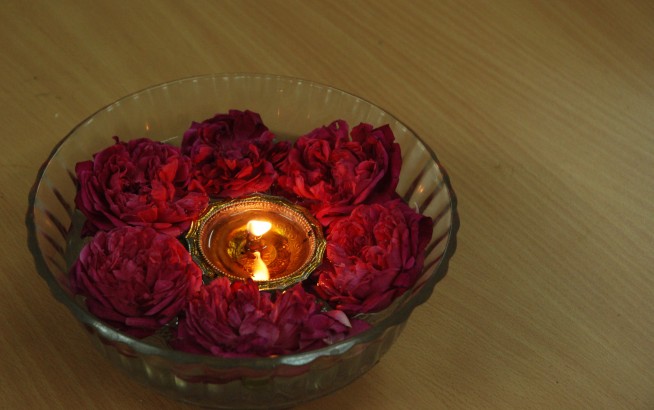We’ve all heard it before. We’re told it in books, podcasts, webinars, and any sort of personal growth workshop in which ideas from the East meet ideas from the West: the body and mind are connected. What affects one apparently affects the other, and if we unite the two then we will live in greater balance.
This idea may sound nice, but it can often seem like it exists in some other world made up of people who wear sandals year-round and spend their whole day trying to align their chakras—a world that has nothing to do with the one in which most of us live.
But many different sources from many different traditions, cultures, and even science support a simple truth:
The body and mind are naturally connected and affect each other continuously. @yogicameron
(Click to Tweet!)
Each of us has the potential to shift our body and mind into perfect unity, and below are five steps you can take to help you enjoy this way of being.
1. Acknowledge that one affects the other. Many of my clients come to me complaining of bodily issues like chronic fatigue, but in resolving their physical condition they overcome mental struggles like depression as well. When they come to me because of a mental issue like attention deficit disorder, they resolve physical problems like constipation and sciatica. Whether it’s the ancient traditions of Ayurveda or more recent medical explorations such as the diagnosing of Tension Myositis Syndrome, a continuing flow of evidence suggests that what affects the body does indeed affect the mind—and vice versa. Our journey toward uniting our body and mind starts with recognizing the potential of this connection to be real.
2. Observe the state of your body and mind. Before we get directions to someplace via our phone, the app must first take note of our current location. Similarly, before we can know what we must do to unite our body and mind, we must observe their current condition. I work with the Indian traditions of Ayurveda and Yoga, and these help us to observe our dosha (the energetic nature of our body) as well as our guna (the relative activity of our mind). To help you along in beginning this process, I have recently released a dosha/guna quiz on my website.
3. Take your body and mind in the opposite direction. When we are cold, we put on a sweater. When we are tired, we take a nap. When we detect imbalance in these simple types of circumstances, we steer those imbalances in the opposite direction. And yet, during times of stress, people who are particularly goal-oriented, type-A personalities tend to go into overdrive seeking results. When people who live more sedentary lives experience stress, they tend to fall into greater lethargy. It’s rare when the reverse is true, in that goal-oriented people detach from results or sedentary people seek more activity. But detecting imbalance in our lifestyle works in a similar way to moments when we feel cold or tired: we benefit from steering those imbalances in the opposite direction. This might begin with calming an active mind, moving a lethargic body, or some other act of contrary influence.
4. Check in on a regular basis. A person who is particularly goal-oriented may succeed in embracing less control, but doing so to an excessive degree could turn their act of detachment into an act of indifference. A person could turn their sedentary life into one of activity, but becoming excessively active could burn the body out. Once we have determined the imbalances in our nature and taken initial steps to reverse them, it benefits us to check in and see if our changes have led to a different kind of imbalance instead.
5. Share your balance with others. Your pursuit of a connection between your body and mind may result in greater health and a greater sense of calm. But when you become a person who has successfully found this connection, your greatest opportunity will be in becoming an example to those around you. By not just creating balance in yourself but inspiring greater balance in others, you will attain more than just health or calm. You will have realized your higher purpose.
Uniting the body and mind doesn’t have to be limited to those who talk about their chakras all day. Each of us has a body and each of us has a mind, and uniting the two may happen to anyone who intends for it to be so.
I encourage you to begin your journey into balance today, so that others may begin theirs in turn.
Yogi Cameron left the world of high fashion as a supermodel to pursue an ongoing study of Ayurveda and Yoga. He has been featured on The Dr. Oz Show, The Ellen DeGeneres Show, The Today Show, Extra, E! Entertainment, and Martha, amongst others. The Guru in You, his first book, was published by HarperCollins in 2011 and his follow-up book The One Plan was published in 2013. Yogi has brought Yoga and meditation in Afghanistan as part of the reintegration program to prepare the country for troop withdrawal and has worked with young girls rescued from sex trafficking practices in Cambodia in coordination with the Somaly Mam Foundation. You can also find him on Twitter, Facebook and his website.












